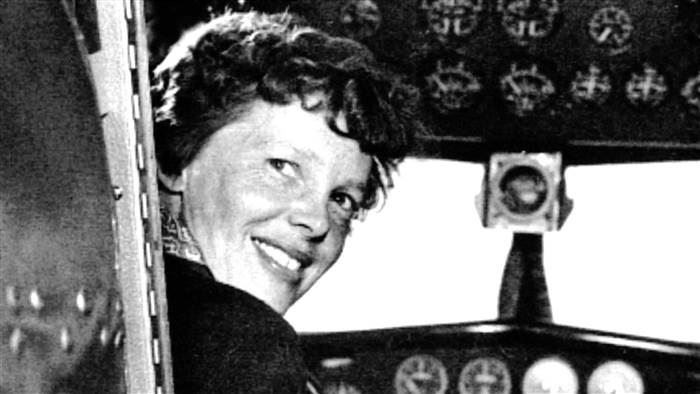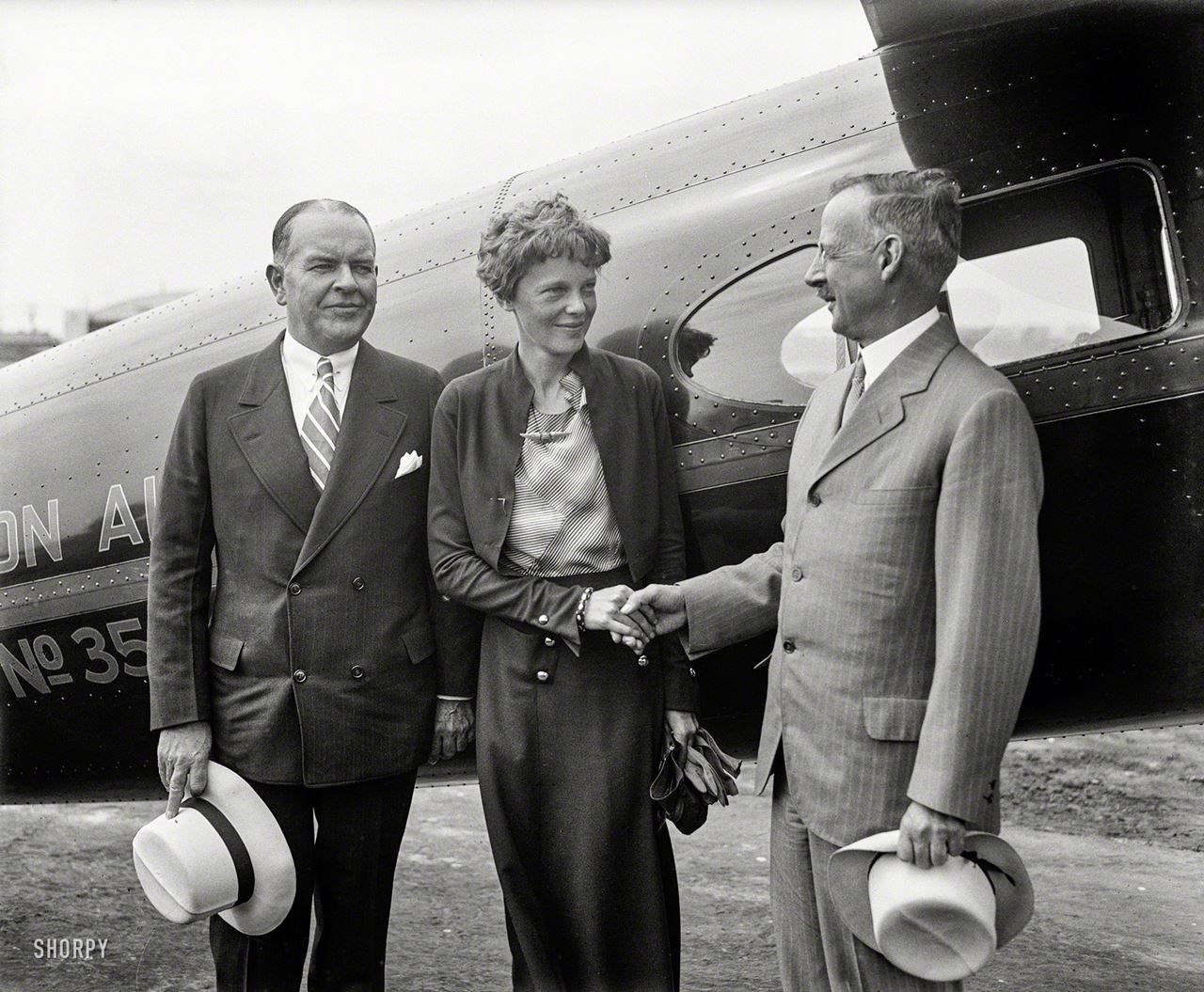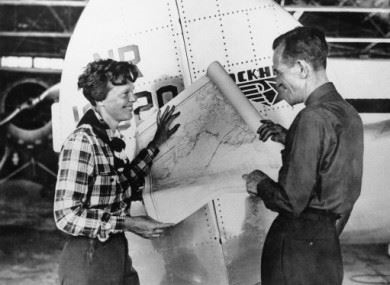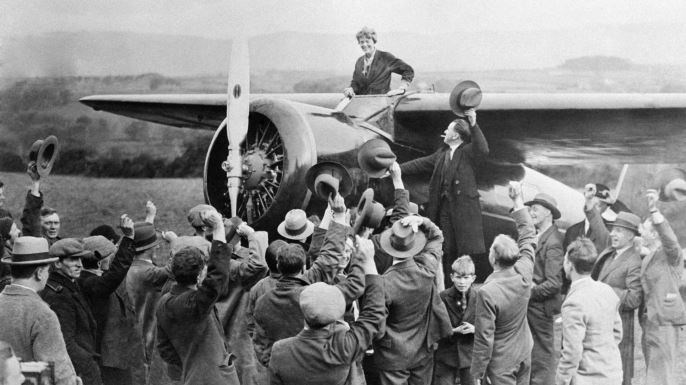“The hero is one who kindles a great light in the world, who sets up blazing torches in the dark streets of life for men to see by” (Adler). Felix Adler, an influential professor, once stated that an admirable hero helps people open their eyes to new experiences. An honorable hero clearly deserves his or her title because numerous people have turned their direction for guidance. Such an influential and path-defining human must be worthy of such praise. A hero is not an individual with superhuman abilities such as Captain America, Spiderman, or Wonder Woman. A hero is an individual who lives on, past the time they were physically present. In other words, a hero is a motivational figure who performs a deed that benefits the public and continues to inspire people even when he or she is not currently alive. Furthermore, a hero must showcase benevolence through their actions and encourage others to follow in their footsteps; a hero’s presence must remind others of the correct path anytime they face an obstacle. Today, whether an individual saves a person’s life by risking their own or aids a whole community in improving their lifestyle, heroism is displayed. In addition to this concept, I define an admirable model as one whose actions and beliefs clearly showcase their inspiration, benevolence, and courageous determination. Overall, a worthy hero valiantly continues to accomplish their desires despite being confronted by pressure; moreover, their influential actions inspire others to persevere.
 Amelia Earhart: an inspirational aviatrix who never gave up.https://www.today.com/money/amelia-earhart-new-evidence-where-aviator-may-have-died-t113676 Similar to Felix Adler’s illustration of a proper hero, there was a courageous feminist who left this world displaying such traits: Amelia Earhart. Earhart was born on July 24, 1897 to Edwin and Amy Otis Earhart. Her parents explored often and left their daughter and her sister, Muriel, at the Otis family home in Atchison with their grandparents. As time progressed, Earhart was forced to relocate frequently due to the financial hardships her family faced; however, she managed to find physical activities anywhere she moved, which interested her far more than the work found in a typical woman’s life. In her early teenage years, Earhart was taken on an airplane ride piloted by Frank Hawks where her aviation interests were sparked: "As soon as I left the ground, I knew I myself had to fly" (qtd. in “Women in Aviation and Space History”). Those ten minutes she spent in the air changed her life, as she was determined to become a pilot soon after receiving a license and buying her own Kinner Airster, a single engine biplane. Ever since her interest for the art of aviation was brought to life, Amelia Earhart never missed a chance to experience a journey in the air. Although Earhart was able to advance within the scientific field, females, in general, living in this time were destined to become house workers and thought to be inferior to men: “Women were long considered naturally weaker than men, squeamish, and unable to perform work requiring muscular or intellectual development. In most preindustrial societies, for example, domestic chores were relegated to women, leaving ‘heavier’ labor such as hunting and plowing to men” (“Women’s History in America”). Earhart, unlike most women, did not take this generalization into mind and set several accomplishments; she was the first woman passenger to fly across the Atlantic, became the first to solo the Atlantic, and set many astonishing speed records throughout her short lifetime. Every journey Earhart embarked on confronted a form of danger; however, she persevered through every obstacle and received endless praise, which she collected as a sample of women’s victory and not just her own. Amelia Earhart attained fame for her numerous records as an aviator, yet several are unaware of this audacious hero’s multi-layered personality; she inspired women to create their own successful futures and she possessed courageous determination while confronting perilous journeys.
Amelia Earhart: an inspirational aviatrix who never gave up.https://www.today.com/money/amelia-earhart-new-evidence-where-aviator-may-have-died-t113676 Similar to Felix Adler’s illustration of a proper hero, there was a courageous feminist who left this world displaying such traits: Amelia Earhart. Earhart was born on July 24, 1897 to Edwin and Amy Otis Earhart. Her parents explored often and left their daughter and her sister, Muriel, at the Otis family home in Atchison with their grandparents. As time progressed, Earhart was forced to relocate frequently due to the financial hardships her family faced; however, she managed to find physical activities anywhere she moved, which interested her far more than the work found in a typical woman’s life. In her early teenage years, Earhart was taken on an airplane ride piloted by Frank Hawks where her aviation interests were sparked: "As soon as I left the ground, I knew I myself had to fly" (qtd. in “Women in Aviation and Space History”). Those ten minutes she spent in the air changed her life, as she was determined to become a pilot soon after receiving a license and buying her own Kinner Airster, a single engine biplane. Ever since her interest for the art of aviation was brought to life, Amelia Earhart never missed a chance to experience a journey in the air. Although Earhart was able to advance within the scientific field, females, in general, living in this time were destined to become house workers and thought to be inferior to men: “Women were long considered naturally weaker than men, squeamish, and unable to perform work requiring muscular or intellectual development. In most preindustrial societies, for example, domestic chores were relegated to women, leaving ‘heavier’ labor such as hunting and plowing to men” (“Women’s History in America”). Earhart, unlike most women, did not take this generalization into mind and set several accomplishments; she was the first woman passenger to fly across the Atlantic, became the first to solo the Atlantic, and set many astonishing speed records throughout her short lifetime. Every journey Earhart embarked on confronted a form of danger; however, she persevered through every obstacle and received endless praise, which she collected as a sample of women’s victory and not just her own. Amelia Earhart attained fame for her numerous records as an aviator, yet several are unaware of this audacious hero’s multi-layered personality; she inspired women to create their own successful futures and she possessed courageous determination while confronting perilous journeys.
 Earhart shows that she can do more than the normal man, even as a woman from the 1900s, by receiving praise for her journey from two men.https://www.shorpy.com/node/17627?size=_original Earhart energizes women, through her accomplishments to shape their own futures by shattering expectations society set on them. When a college professor introduced Amelia Earhart to an audience of young women, he praised her positive traits: “...her zestful approach to life and her straightforward attitudes about women and careers would provide helpful and practical guidance to female students” (Pelt 169). The unspecified professor describes Earhart as a person who possesses “straightforward attitudes about women and careers” and would high-spiritedly provide “practical guidance to female students,” which reflects her impartial mindset for both ladies and men obtaining occupations that bring them happiness. These descriptions, additionally, depict an image of Earhart supporting women’s success in uncharted career grounds. Furthermore, when the speaker mentions Earhart’s astounding qualities, the reader is able to identify that Amelia Earhart eschewed the stereotypical titles such as mother, woman, and housekeeper, while continuing to pioneer new inroads for women and motivating them to look beyond their confines and prevail. Additionally, another database article explains the overall significance of her life by stating; “Amelia Earhart (July 24, 1897–July 1937) was an aviator and feminist who symbolized the excitement of early aviation and new roles for women to Depression-era Americans” (Encyclopedia of the Great Depression). Earhart depicted the “excitement of early aviation,” proving that the art of flight was a modern art that stood as an unstable concept. Moreover, Earhart stood as a symbol of “new roles for women,” as many were seeking hope in improving their financial conditions, due to the recent economic devastation that occurred during the Great Depression of the 1930s. The author briefly acknowledges Earhart’s astonishing traits in order to introduce the motivational aspects of the pilot who lived in an unpleasant time that transformed stable families into impoverished ones; she clearly inspired and benefited lives among her community. Earhart showed the world that a woman not only has the power to care for her family, but also has the capability of contributing to her family’s wealth, which enabled men to think highly of women and was desirable during such a miserable time. It is evident that women were restricted from exploring the career opportunities that were available to men during this time period; however, it only took one courageous woman, Amelia Earhart, to set a couple records that encouraged ladies to confidently grasp their futures into their own hands.
Earhart shows that she can do more than the normal man, even as a woman from the 1900s, by receiving praise for her journey from two men.https://www.shorpy.com/node/17627?size=_original Earhart energizes women, through her accomplishments to shape their own futures by shattering expectations society set on them. When a college professor introduced Amelia Earhart to an audience of young women, he praised her positive traits: “...her zestful approach to life and her straightforward attitudes about women and careers would provide helpful and practical guidance to female students” (Pelt 169). The unspecified professor describes Earhart as a person who possesses “straightforward attitudes about women and careers” and would high-spiritedly provide “practical guidance to female students,” which reflects her impartial mindset for both ladies and men obtaining occupations that bring them happiness. These descriptions, additionally, depict an image of Earhart supporting women’s success in uncharted career grounds. Furthermore, when the speaker mentions Earhart’s astounding qualities, the reader is able to identify that Amelia Earhart eschewed the stereotypical titles such as mother, woman, and housekeeper, while continuing to pioneer new inroads for women and motivating them to look beyond their confines and prevail. Additionally, another database article explains the overall significance of her life by stating; “Amelia Earhart (July 24, 1897–July 1937) was an aviator and feminist who symbolized the excitement of early aviation and new roles for women to Depression-era Americans” (Encyclopedia of the Great Depression). Earhart depicted the “excitement of early aviation,” proving that the art of flight was a modern art that stood as an unstable concept. Moreover, Earhart stood as a symbol of “new roles for women,” as many were seeking hope in improving their financial conditions, due to the recent economic devastation that occurred during the Great Depression of the 1930s. The author briefly acknowledges Earhart’s astonishing traits in order to introduce the motivational aspects of the pilot who lived in an unpleasant time that transformed stable families into impoverished ones; she clearly inspired and benefited lives among her community. Earhart showed the world that a woman not only has the power to care for her family, but also has the capability of contributing to her family’s wealth, which enabled men to think highly of women and was desirable during such a miserable time. It is evident that women were restricted from exploring the career opportunities that were available to men during this time period; however, it only took one courageous woman, Amelia Earhart, to set a couple records that encouraged ladies to confidently grasp their futures into their own hands.
 Earhart was always eager and prepared to begin a new journey.https://www.thejournal.ie/fresh-search-for-amelia-earhart-and-navigator-75-years-after-disappearance-390612-Mar2012/ Amelia Earhart remained valiant and determined to complete the risky voyages she confronted due to her adored perseverance. A database article lists Earhart’s many accomplishments while also recognizing her determination: “On July 6, 1930 she set the woman's speed record in an airplane, 181.18 miles per hour. On May 20-21, 1932 she became the first woman to fly solo across the Atlantic, and on August 24-25 of the same years she set the woman's non-stop transcontinental speed record…” (Contemporary Heroes and Heroines). It is repeatedly mentioned that Earhart set several “woman’s” records, indicating that she was one among very few who associated themselves with aviation. Earhart decided to take on an unusual life that many would not advise and continued her passion with bravery. Amelia Earhart achieved numerous titles during her short life that made her devotion for aviation flourish; moreover, the accolades influenced her to keep flying while showing the world, and herself, her technical skills. Deserving heroes such as Amelia Earhart possess everlasting courage and determination while continuing with the actions they identify as correct, especially after being bombarded with discouragement from all directions of society. By enabling the perseverance and courage inside of her, Earhart exemplifies how one should react to a harsh situation. Additionally, when Amelia Earhart was interviewed for The New York Times after a near tragedy on the Friendship, a Fokker Trimotor airliner, the issue’s headline symbolized her valor: “Miss Earhart Says Motors Spat and Gas Ran Low, But She Had Neither Fear Nor Doubt of Success” (The New York Times). The short headline emphasizes Amelia Earhart’s excellence and leaves a message that will engrave into the reader’s mind; furthermore, the headline mentions that Earhart held “neither fear nor doubt of success,” proving that she did not react like others would by panicking in a time of such immense danger. Her words of assurance even at a critical time reflect the determination she possessed while clearly showing the audacity she maintained as well. Earhart is a role model who did not take danger as an excuse to abandon flying after her risky expedition on the Friendship, enabling a praiseworthy view. Amelia Earhart persevered with courage that constantly motivated her to fly to the top despite the impediments that brought challenges.
Earhart was always eager and prepared to begin a new journey.https://www.thejournal.ie/fresh-search-for-amelia-earhart-and-navigator-75-years-after-disappearance-390612-Mar2012/ Amelia Earhart remained valiant and determined to complete the risky voyages she confronted due to her adored perseverance. A database article lists Earhart’s many accomplishments while also recognizing her determination: “On July 6, 1930 she set the woman's speed record in an airplane, 181.18 miles per hour. On May 20-21, 1932 she became the first woman to fly solo across the Atlantic, and on August 24-25 of the same years she set the woman's non-stop transcontinental speed record…” (Contemporary Heroes and Heroines). It is repeatedly mentioned that Earhart set several “woman’s” records, indicating that she was one among very few who associated themselves with aviation. Earhart decided to take on an unusual life that many would not advise and continued her passion with bravery. Amelia Earhart achieved numerous titles during her short life that made her devotion for aviation flourish; moreover, the accolades influenced her to keep flying while showing the world, and herself, her technical skills. Deserving heroes such as Amelia Earhart possess everlasting courage and determination while continuing with the actions they identify as correct, especially after being bombarded with discouragement from all directions of society. By enabling the perseverance and courage inside of her, Earhart exemplifies how one should react to a harsh situation. Additionally, when Amelia Earhart was interviewed for The New York Times after a near tragedy on the Friendship, a Fokker Trimotor airliner, the issue’s headline symbolized her valor: “Miss Earhart Says Motors Spat and Gas Ran Low, But She Had Neither Fear Nor Doubt of Success” (The New York Times). The short headline emphasizes Amelia Earhart’s excellence and leaves a message that will engrave into the reader’s mind; furthermore, the headline mentions that Earhart held “neither fear nor doubt of success,” proving that she did not react like others would by panicking in a time of such immense danger. Her words of assurance even at a critical time reflect the determination she possessed while clearly showing the audacity she maintained as well. Earhart is a role model who did not take danger as an excuse to abandon flying after her risky expedition on the Friendship, enabling a praiseworthy view. Amelia Earhart persevered with courage that constantly motivated her to fly to the top despite the impediments that brought challenges.
 Amelia Earhart is an admirable hero because she constantly inspired others to reach great heights. https://www.history.com/topics/amelia-earhart Beyond Amelia Earhart’s popular achievements as an aviatrix, she empowered women to break their submissive roles in society, and the audacious tenacity she held throughout each obstacle sculpted her into an authentic hero. During each flight, numerous dangers constantly confronted Earhart. Furthermore, she was not able to determine if she would return alive while boarding an aircraft. However, she bravely withstood such risky hardships, showcasing how an individual should respond to a problem. At a conference held by the New York Herald Tribune, a man introduced Earhart with praise: “She has set a pace for those of her age and time. She has never been content to rest on her laurels. She has worked, and is working, and will continue to work hard to further the science to which she has dedicated her life’” (Contemporary Heroes and Heroines). Earhart traveled on such expeditions because she believed that women have the ability to shape their own futures, even if society’s expectations did not align with her idea. Susan Ware, the author of another article, states the key belief that opens up space on the front-page news for the aviator: “[Earhart held a] fervid conviction that women could do anything they set their minds to” (Encyclopedia of the Great Depression). This “conviction” encouraged other women to boldly create success for themselves instead of remaining a housekeeper. I consider Amelia Earhart to be an influential role model who deserves to be titled a hero. She motivated herself, as well as a countless number of women, to confront hurdles with courage and to succeed at all times. Her accomplishments prove that when a person sets their mind on a target, they are capable of reaching it. Her will to face life-threatening events that made her dreams come true has uplifted me; her dedication makes her an inspiration to many, including you and me, even past the time of her physical presence. I aspire to pursue my future inspiring others, especially women, to use their knowledge to benefit society; moreover, I will achieve recognition as a dedicated and influential woman rather than a homemaker, just like Amelia Earhart. Now, an observer can truly comprehend Adler’s idea when he conveys that heroes create a luminous path in people’s lives, determining the overall success of their futures. The great courage, perseverance, and motivation Earhart possessed implies that everyone has the capability of reaching great heights by shattering immoral boundaries set by society, even if it means experiencing a form of peril.
Amelia Earhart is an admirable hero because she constantly inspired others to reach great heights. https://www.history.com/topics/amelia-earhart Beyond Amelia Earhart’s popular achievements as an aviatrix, she empowered women to break their submissive roles in society, and the audacious tenacity she held throughout each obstacle sculpted her into an authentic hero. During each flight, numerous dangers constantly confronted Earhart. Furthermore, she was not able to determine if she would return alive while boarding an aircraft. However, she bravely withstood such risky hardships, showcasing how an individual should respond to a problem. At a conference held by the New York Herald Tribune, a man introduced Earhart with praise: “She has set a pace for those of her age and time. She has never been content to rest on her laurels. She has worked, and is working, and will continue to work hard to further the science to which she has dedicated her life’” (Contemporary Heroes and Heroines). Earhart traveled on such expeditions because she believed that women have the ability to shape their own futures, even if society’s expectations did not align with her idea. Susan Ware, the author of another article, states the key belief that opens up space on the front-page news for the aviator: “[Earhart held a] fervid conviction that women could do anything they set their minds to” (Encyclopedia of the Great Depression). This “conviction” encouraged other women to boldly create success for themselves instead of remaining a housekeeper. I consider Amelia Earhart to be an influential role model who deserves to be titled a hero. She motivated herself, as well as a countless number of women, to confront hurdles with courage and to succeed at all times. Her accomplishments prove that when a person sets their mind on a target, they are capable of reaching it. Her will to face life-threatening events that made her dreams come true has uplifted me; her dedication makes her an inspiration to many, including you and me, even past the time of her physical presence. I aspire to pursue my future inspiring others, especially women, to use their knowledge to benefit society; moreover, I will achieve recognition as a dedicated and influential woman rather than a homemaker, just like Amelia Earhart. Now, an observer can truly comprehend Adler’s idea when he conveys that heroes create a luminous path in people’s lives, determining the overall success of their futures. The great courage, perseverance, and motivation Earhart possessed implies that everyone has the capability of reaching great heights by shattering immoral boundaries set by society, even if it means experiencing a form of peril.
Works Cited
"Amelia Earhart." Contemporary Heroes and Heroines, vol. 1, Gale, 1990. Biography in
Context,
https://link.galegroup.com/apps/doc/K1607000084/BIC1?u=powa9245&xid=3f7a55fd. Accessed 21 Dec. 2017.
"Amelia Mary Earhart." Science and Its Times, edited by Neil Schlager and Josh Lauer, vol. 6,
Gale, 2000. Biography in Context,
https://link.galegroup.com/apps/doc/K2643412369/BIC1?u=powa9245&xid=9b628c44. Accessed 21 Dec. 2017.
Pelt, Lori Van. American Heroes: Amelia Earhart: the Sky's No Limit. Forge, 2005.
“The Hero Is One Who Kindles a Great Light in... - Quote.” AllAuthor, allauthor.com/quotes/118749/.
The New York Times, The New York Times, www.nytimes.com/learning/general/onthisday/big/0617.html#headlines.
WARE, SUSAN. "Amelia Earhart." Encyclopedia of the Great Depression, edited by Robert S.
McElvaine, Macmillan Reference USA, 2004. Biography in Context,
https://link.galegroup.com/apps/doc/K3404500150/BIC1?u=powa9245&xid=a4126a60. Accessed 4 Jan. 2018.
WIC - Women's History in America, www.wic.org/misc/history.htm.
Women in Aviation and Space History - Smithsonian National Air and Space Museum,
airandspace.si.edu/explore-and-learn/topics/women-in-aviation/earhart.cfm.
Page created on 2/16/2018 6:06:39 PM
Last edited 6/10/2018 10:11:18 PM
